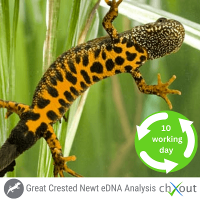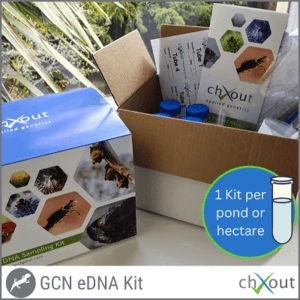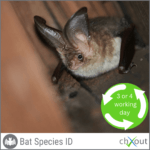GCN eDNA
3 OR 10 WORKING DAY TURNAROUND
FROM £145 + KIT
KIT - £25 incl. VAT

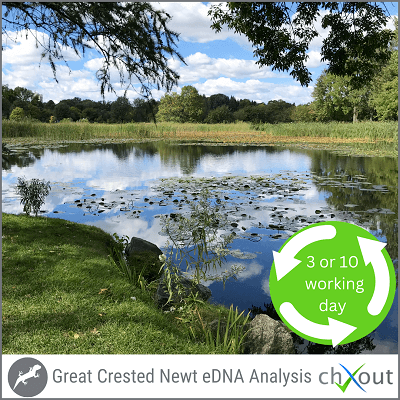
A perfect score for our second year running for the FAPAS GCN eDNA proficiency test!
Great Crested Newt testing using environmental DNA (eDNA) analysis is a highly effective method for determining Great Crested Newt (GCN, Triturus cristatus) presence or absence during the breeding season. Our standardised kit and laboratory procedures are designed in line with Natural England protocols (Biggs et al, 2014).
eDNA analysis makes Great Crested Newt detection and monitoring quick, simple and cost effective.
It is important to note that samples should be collected between 15 April and 30 June, by a licenced surveyor, to be accepted by Natural England for planning applications or licensing purposes.
WHAT IS ENVIRONMENTAL DNA?

Environmental DNA (eDNA) is nuclear or mitochondrial DNA collected from an environmental sample. This can be from water, soil, faeces or even the air! The eDNA is released from the organism into the environment as it interacts with it. This means that a sample can be taken without taking it directly from the organism itself.
eDNA analysis is a powerful tool for surveying aquatic vertebrate communities without disturbing, capturing or physically identifying them. It has been developed as a quick and accurate alternative to traditional surveying methods.
WHY CHOOSE eDNA ANALYSIS?
- Great Crested Newts are a protected Species. The animals, their eggs, breeding sites and resting places are protected by law. eDNA analysis is non-invasive, providing minimal disturbance with one visit to the pond.
- In the event of suspicion of GCN in areas targeted with infrastructure, delays may be faced while traditional surveys are taking place. In this instance, eDNA testing can be used in addition to traditional survey methods by providing the initial prompt indication of GCN presence.
- eDNA Analysis is also ideal for ecological impact assessments and evaluation of conservation measures.
- It can provide an early indication for development project budgeting and timescales.
- During a study carried out to determine the value of eDNA as survey technique, eDNA was found to have a 99.3% detection rate. Comparatively, more traditional survey methods such as bottle traps and torch counts detected newts between 44% and 76% of the time (Biggs et al, 2015).
TURNAROUND
We provide two options for results turnaround designed to fit with any time or budget restraints.
Please note that if the laboratory is especially busy, we may request that you book a lab analysis slot based on the return courier of your samples and any deadlines you may have to ensure that we can manage expectations.
£235 incl. VAT
Kit sold separately (£25 incl. VAT)
£145 incl. VAT
Kit sold separately (£25 incl. VAT)
GREAT CRESTED NEWT eDNA KITS
We provide our GCN eDNA Kit separately so that you can decide on roughly how many kits you require and then add the analysis on each time you use one.
Our standardised eDNA kit is prepared in line with Natural England protocols (Biggs et al, 2014). Contents include:
- 2x pair sterile gloves
- 1x Whirl-Pak stand-up bag
- 1x ladle
- 1x pipette
- 6x 50ml conical centrifuge tubes (each containing 35ml of preservative solution)
- Sample submission form
- Resealable bag for return of tubes
- Instruction leaflet
WHY CHOOSE CHXOUT?
- Reliability – we take part in the annual FAPAS GCN eDNA proficiency testing scheme for which we have again achieved a perfect score of 100% in 2023 for our second year offering the service! This scheme is in place to ensure that laboratories are providing a consistent, high quality service.
- Our standardised kit and laboratory procedures are design in line with the approved Natural England protocol Technical Advice Note WC1067 (2014).
- If you are local to County Durham you are more than welcome to drop your kits off in person to us at The Durham Genome Centre for your convenience and peace of mind.
YOUR RESULTS
Results reports are provided by email as a PDF attachment usually before 5pm on your due date. If your sample is finished in the laboratory early, we will send the results to you as soon as they are available. Please note that on occasion results may be sent after 5pm during busier periods.
A document will be included in the report to aid with interpretation of your results which will be confirmed as Positive, Negative, Negative after dilution or Inconclusive for each sample provided (six tubes = one sample).
WHAT DO I NEED TO DO?
- Order your eDNA analysis kit.
- Collect your samples using our standardised eDNA analysis kit and instruction leaflet.
- Ensure that your samples are sealed securely and labelled correctly.
- Complete the relevant forms for your service. If you email them to sales@chxout.com we will know to expect your sample & it will help us to mange case loads in busy period.
- Package your samples safely and include your client reference.
- Enclose your sample submission form if these have not already been emailed to us.
- Send your samples to us at: chXout®, The Durham Genome Centre, Park House, Station Road, Lanchester, DH7 0EX
- Your sample(s) will be checked and logged in upon receipt ready to be passed to the laboratory. If we note any anomalies we think you may need to be aware of prior to the start of processing we will contact you as to how you would like to proceed as soon as possible. Potential notes may include: a low/medium/high level of sediment in the sample, presence of algae, presence of white precipitate. These are things which may have an affect on the outcome of your result, so it is important to read sampling instructions carefully.
- A report will be emailed to you attached as a PDF document within your chosen turnaround time and as soon as the results are available.
Please note that return courier is not included in the analysis price. We will be happy to arrange this for you at any stage in the process or please see the document included with your kit regarding courier return options.
FAQs
Great Crested Newt eDNA FAQs
eDNA analysis is a powerful tool for surveying aquatic vertebrate communities without disturbing, capturing or physically identifying them. It has been developed as a quick and accurate alternative to traditional surveying methods.
We recommend opening the outer packaging of the kits with care so that you are able to use them for return courier to reduce waste. If you use your own packaging for return, you will need to ensure the relevant "keep upright" arrows are included on either end of the box.
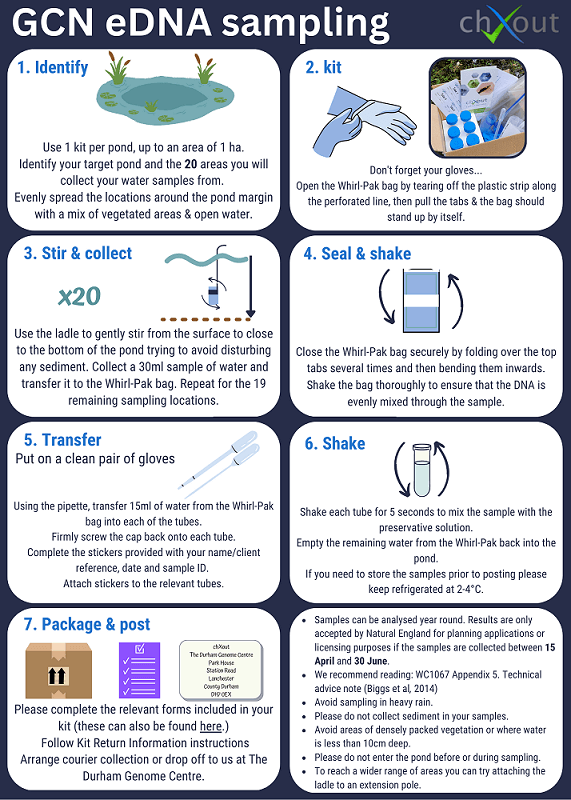
After sampling we recommend to return kits as soon as possible. If there is a delay between sampling and courier, we would recommend to keep them refrigerated.
A re-test with a new sample is usually recommended.
Please note that sometimes water chemistry can potentially be the cause of PCR inhibition which means that a re-sample may return the same inconclusive result.
Citation: Biggs J, Ewald N, Valentini A, Gaboriaud C, Griffiths RA, Foster J, Wilkinson J, Arnett A, Williams P and Dunn F 2014. Analytical and methodological development for improved surveillance of the Great Crested Newt. Appendix 5. Technical advice note for field and laboratory sampling of great crested newt (Triturus cristatus) environmental DNA. Freshwater Habitats Trust, Oxford.


